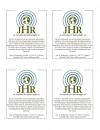
“How the World Social Forum Got Hijacked”
Davey D
When I first arrived at the World Social Forum (WSF) in Nairobi, Kenya, things didn’t seem right from the very moment I got off the plane. I couldn’t quite place it, but things seemed a bit disorganized.
It ranged from our hotel suddenly not having any record of our reservations or an accounting of my room which we prepaid for to the registration process which became an all day affair with people from the USA having to pay damn near 10 times as much as people from other places. Banks that were supposed to be open were closed, buses that were supposed to be available suddenly weren’t.
At first I kept my complaints to myself, but as the day progressed I overheard and later saw lots more people complain about the disorganization. What disturbed me were the excuses that were given. I kept hearing over and over again, that we all needed to be patient, because the WSF was in Nairobi which is a third-world city. In other words, because this prestigious event designed to bring thousands from all around the world to address and strategize around social justice issues, was in Africa, we could expect confusion and mayhem.
Well many folks claimed that extreme poverty in this beautiful country prevented people from bringing things up to speed.
A lot of folks seemed to accept it, but it didn’t sit well with me. I recall telling a couple of folks, that there’s a big difference between not having certain luxuries or amenities, and shit just being janky. I been around poor people all my life who don’t have a lot, but their graceful demeanor and their commitment to executing a task always overshadowed what they were lacking.
Me going to a hotel that attempted to double charge me because they couldn’t ‘find’ my information, an outrageous registration process that had me going from one side of town to another because the banks that were supposed to be open suddenly closed, representatives for a huge corporate cell phone company being the one handling my registration at a world event that was supposed to be shunning mega-corporations was not the result of poor people not being able to do for self. It was just some straight up jankiness.
jankiness.
I wasn’t giving Africa-the motherland a pass on this one.
Some thought I was being a bit impatient and not too understanding, but I’m glad I stuck to my guns, because my suspicions were confirmed on the opening day of the forum when several dozen youths from the Korogocha slums showed up at the WSF at great risk to their personal safety and freedom let everyone know exactly what was going on.
They stood in front of the only eatery at the WSF site which was charging crazy prices for food and had people waiting more then an hour just to get something that wasn’t all that good in the first place.
"Shame on you fellow Kenyans - shame on you for exploiting the people!" they yelled.
They told people not to eat at the food court as they fanned out and blocked the entrance. They then laid out hand-made signs that read ‘The World Social Forum Has Been Hijacked,’ ‘Reduce Prices for Kenyans,’ and ‘No Capitalism for People in the Ghetto’.
One of the organizers began running it down for anyone who would listen. He explained that the WSF had been hijacked by corrupt government officials and mega corporations who they were in bed with.
They pointed out Kenya’s Interior Secretary as the main culprit who they accused of exploiting the WSF for personal gain. They spoke passionately of how the average Kenyan could not afford to attend the WSF where issues about homelessness, poverty, and the health of poor people were being discussed. The people who are most impacted by these social ills found themselves having to spend like half a week’s salary to attend.
The protestors wanted to know why the WSF wasn’t free or at least affordable for Kenyans.
They also wanted to know why they were not included in the planning process. They gave a serious run down of how the WSF got compromised and explained that this disorganization many of us were experiencing was the result of greedy officials who put a bad mark on all Kenyans.
The protesters then blew the whistle about how shady things were when they pointed out that the high priced food court was owned by the Interior Secretary and that his cousin was the head of the police force that had started to show up in mass to remove the protesters. One by one WSF participants removed themselves from the food court to show solidarity with the cats from Korogocho.
It wasn’t long before the only people remaining where Europeans. It was a surreal site and very blatant. My co-anchor, Angelica, went over and tried to interview those who chose to remain in the mists of this spirited protest. Only one person, a guy from Canada, would speak. He complained that if he didn’t sit there and eat and he would have no place else to go and he wasn’t about to walk around the forum remaining hungry. He wasn’t trying to be down with the protest.
The police showed up and made their way inside the food court and pulled out their batons. A Latina organizer named Alma Rosa from New Mexico immediately went over the line of police and started engaging them. A veteran organizer, she had perfected the tactic of negotiating with police to get them not to exert violence on protesters in the U.S. She successfully applied those skills that day at the forum. It wasn’t long before she had the police all yielding batons, laughing, and, according to Alma Rosa, eventually seeing that it would be sad a day for them to be beating on fellow Kenyans with the whole world watching.
I spoke to one of the main Korogocho activists, a young brother named Francis, and asked him what sort of ramifications will there be for them calling out government officials. Without hesitation he said before nightfall, some of them will be sitting in jail cells. He said the police will make their moves on the protesters away from the WSF. During the protests Francis can be heard chanting “Please don’t eat in the food court- These people are criminals-They will one day kill us.” At the time no one thought anything of it. Two days later two of the protesters would be assassinated by Kenyan police under suspicious circumstances.
We got the word of the police killing on our last day in Kenya when one of the organizers sought our group out at the closing ceremonies and explained that the cops had pulled over a car that had two of the protesters. The cops supposedly found a gun and without saying a word shot the two people. According to folks in the slum areas the police will shoot you with no questions asked if they find you with a gun.
In fact, the weekend we were in Nairobi, some 13 people were shot and killed by police in the slum areas. At first the story of the police killing seemed outlandish. Certainly the 5-0 wouldn’t be that brazen. Later that day we went to Korogocho with some members of the Malcolm X Grassroots Movement and got confirmation that indeed two people had been killed by the police and not much else was being said. Now listening to Francis words about ‘the Government wanting to kill them’ took on a new and more sinister meaning.
It also hit home, that those of us who helped out or in my case actually reported on the protest should watch our step. There ain’t no telling what can go down in a country that is thousands and thousands of miles away from home, especially when you got powerful people being called out for corruption and being accused of undermining the WSF. I made sure my tapes were tucked away safely, my stories uploaded to the radio station, and I kept my passport in a safe and stayed close to the hotel.
The story that many people around the world got to see or hear about took place two days after the opening day protests when scores of young kids showed up at the WSF and went straight to the food court and demanded to be fed. That was a heartbreaking sight onto itself as things got out of hand. Hungry, desperate kids were grabbing dirty newspapers, stained t-shirts, or just using their bare hands to get the hot scalding food (pasta and stew).
Some of the reporters were moved to stop taking pictures and help out, while others were callous and uncaring and just watched as these kids went nuts trying to get whatever scraps of food they could gather.
The entire ordeal was beyond disturbing.
We were on the scene and covered most of the protest. As you listen keep in mind most of these protesters were around 16-17 years old. Keep in mind two of them lost their lives as they blew the whistle on government corruption.
Protest Audio: www.odeo.com/audio/7974973/view
 By remaining within sovereign borders, they remain within the repressive political structure that forced them to leave their homes in the first place. Perhaps with increasing significance, they will gain an increasing voice.
By remaining within sovereign borders, they remain within the repressive political structure that forced them to leave their homes in the first place. Perhaps with increasing significance, they will gain an increasing voice.















